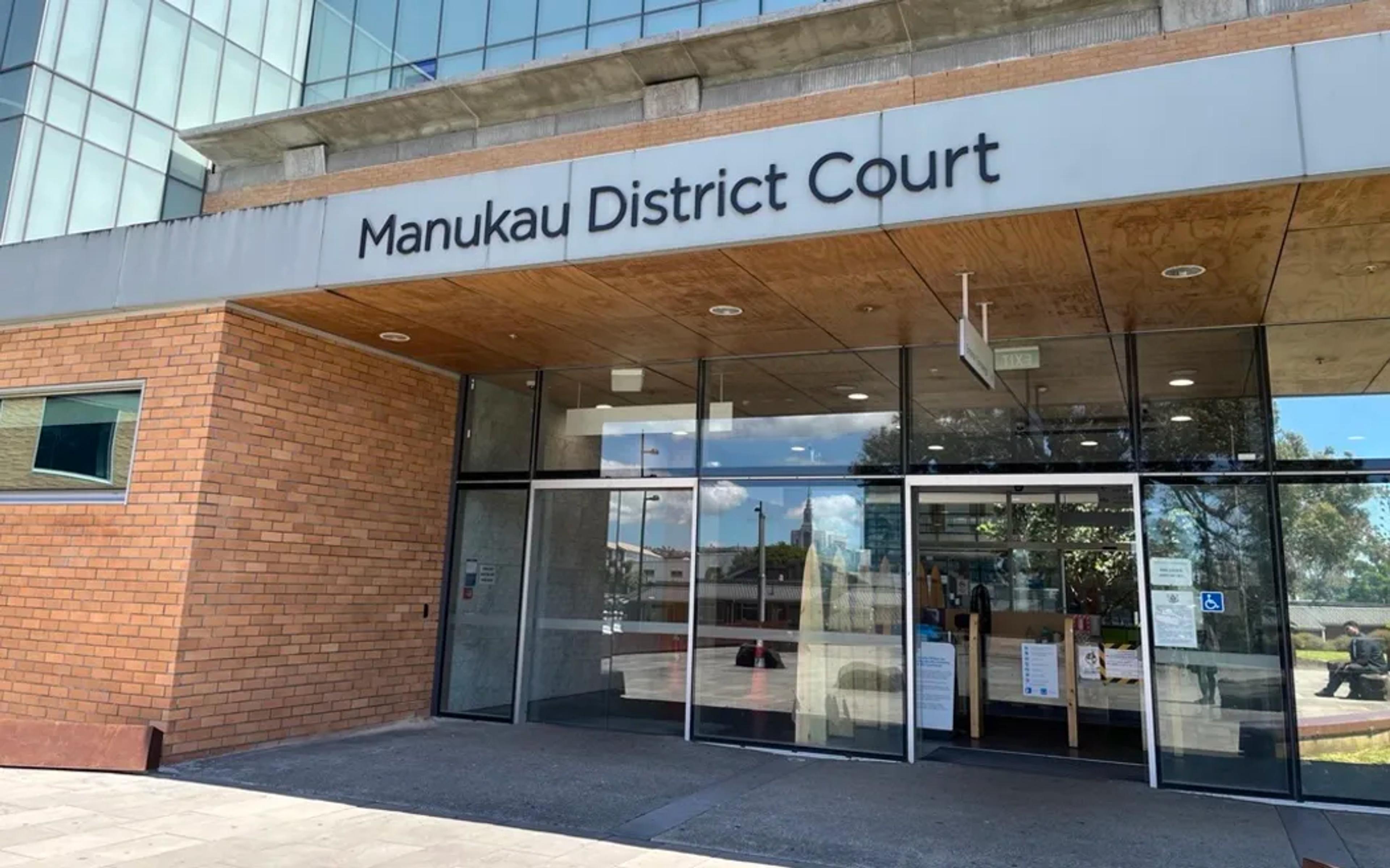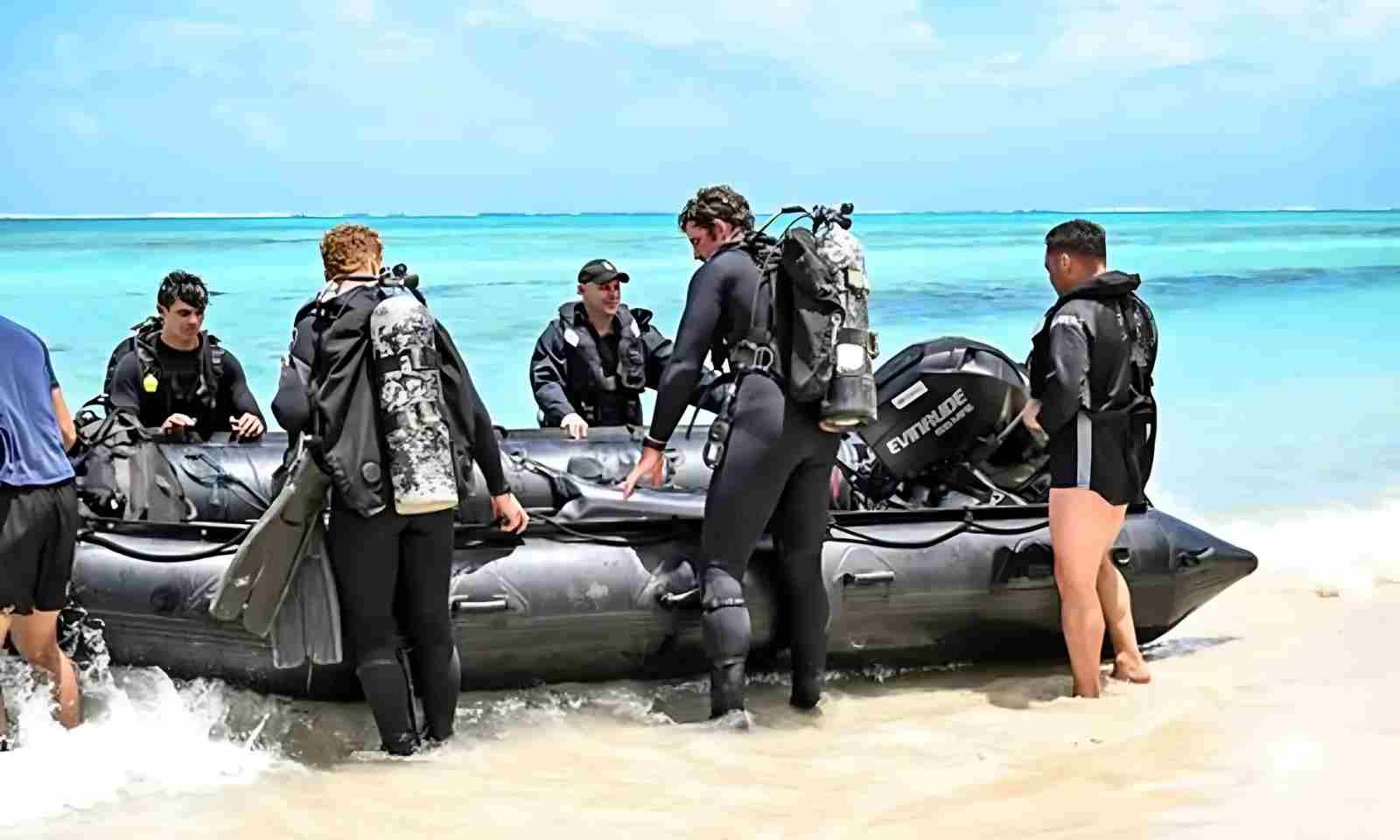

The HMNZS Manawanui, taken by one of the rescuers, on the night it hit a reef and sank off the coast of Upolu Island in Sāmoa on 5 October.
Photo/Ark Marine
HMNZS Manawanui: 'Residual and light, it's still diesel fuel'
With recovery teams focussed on removing oil seeping from the stricken naval ship amid a 'no-fish' warning issued, frustrated residents want the vessel removed as soon as possible.


US warns Fiji over human trafficking concerns linked to Grace Road Group

‘A man so full of love’: Fepulea’i awarded comedy Topp Prize


Black Caps legend joins global fight against gender violence

US warns Fiji over human trafficking concerns linked to Grace Road Group

‘A man so full of love’: Fepulea’i awarded comedy Topp Prize

All eyes are on Sāmoa as the government, with the help of New Zealand, responds to a potential environmental disaster off the southern coast of Upolu Island.
But for villagers living along the 20-kilometre shoreline where the HMNZS Manawanui sunk after crashing into a reef on 5 October, their eyes have been fixed on the site where the navy vessel went down.

A dive team prepares to head out to the wreck of the HMNZS Manawanui. Photo/Royal New Zealand Navy
This is because an oil spill from the ship threatens marine life in the area, environmentalists and locals claim.
As the cleanup continues following the sinking of the Manawanui, concerns continue to grow among locals over the impact the sunken ship will have on the natural environment.
Resident Ulugia Su’a Jay Ahfook Schuster told Pacific Mornings' William Terite they are also concerned about the lack of communication from the authorities.
"It's unusual like in Samoa, not a lot happens here, especially on the south side as well. It's quite quiet on this side so having something like that happen is quite dramatic for us," Schuster said.
"And we don't really know what's going on. Apart from the guys that have come over from the Navy to dive out there to salvage because there's not much they can do in the sense of cleaning up.
"So, we don't understand what was in there, what was going out. There's been talk about diesel being lighter, but there's definitely diesel there. There's definitely oil has leaked out. And a lot of the locals had cleaned it up.
"The good thing about it is there wasn't a lot, but there was still enough. And it's quite small and I don't know if you can see behind me, our water's here, you know, nice clean, pure of pollution. So any pollution is a big effect to us. What it is that we do now?"
Oil seeping from the wreck of the survey ship is not from the vessel's main tanks and the New Zealand Defence Force says removing them is a priority for the recovery teams.
About 200,000 litres of fuel leaked from the HMNZS Manawanui, one week after the survey ship began listing, caught fire, and sank off the southern coast of Upolu, Sāmoa's most populated island.
The ship contains about 950 tonnes of fuel, and now lies on its side on the sea floor about 30 metres down in a marine reserve, the NZDF said.
Maritime Component Commander, Shane Arndell, told Terite that every effort is being made to ensure there's minimal impact and damage to the marine environment and the locals who depend on the sea for their livelihood.
"We know that there is residual fuel now leaking from the vessel itself. It's light diesel fuel and at the moment it's tracking parallel to the coast," he said.
But Schuster said whether it's residual fuel or light fuel, it's still diesel.
"I saw that and I'm saying, what kind of light is it? Can we drink it? I mean, is it good enough to drink? I don't think so. So, regardless of whether it's light or whatever it is, it's still diesel.
"I went out yesterday and people still fishing on the side because you don't really smell it in the lagoons. But you can definitely smell it when you go out to the site where the boat actually sank.
"And there's a lot of patches of seaweed and that also acts as a filter when the water comes into the lagoons. You don't really see or smell it inside the lagoons, but it is there and the fish are swimming around it and that's the fish that we're fishing out. But it's diesel. I mean, light, heavy it's still diesel."

Villagers along a 20-kilometre coast line off Upolu Island have been advised not to fish in the area. Photo/supplied
Sāmoan police, fire and emergency teams, and a group of local divers and boaties helped to get all 75 members of the crew back to shore safely.
Sāmoa's Marine Pollution Advisory Committee (MPAC) and the Royal New Zealand Navy have both confirmed the Manawanui is leaking “residual oil” from three locations of the stricken ship.
In a statement, MPAC said it had been in discussions about the removal of the Manawanui’s anchor and three shipping containers still on the reef. The focus was to ensure this was done without causing more damage to the reef.
Chief executive of Samoa’s Ministry of Works, Transport and Infrastructure, Fui Tupa’i Mau Simanu, said the vessel’s anchor and the shipwreck itself had caused significant damage to the reef.
“Assessments show that physical destruction to the reef is approximately 5000 square metres," Fui told journalists.
Villagers from Tafitoala were among the locals who helped rescue the Manawanui crew.
Its mayor Taloaileono Vasasou told Terite there continues to be worry among the villagers after a tapu - prohibited ban - was put in place at Tafitoala Coast by the Sāmoan government as work continues at the shipwreck site.
Villagers close to Upolu Island have been advised to refrain from fishing along the 20km coast line.
Taloaileono said he feared the sea life would be affected - something the villagers relied heavily on for food and income.
He said they have written to the government, calling for swift action to protect their marine environment from any damage caused by the New Zealand navy ship.
"A letter, signed by the village, has been submitted to the Ministry of Natural Resources and Environment, requesting urgent action."
Taloaileono said the village heavily relies on the sea for their daily food, and they are worried that leaked oil from the ship could cause damage to their marine resources.
He said Tafitoala has an ongoing Faisua (Giant Clam) Project, and the palolo season is this month. To Sāmoans, palolo is a delicacy to be enjoyed once a year and is esteemed as the Sāmoan caviar.
Ka palolo (harvesting palolo) is done late at night before the sun comes up, Taloaileono told PMN News, where participants check for the rise over two to four days.

HMNZS Manawanui now lies on its side on the sea floor about 30 metres down, in a marine reserve, the Royal New Zealand Navy says. Photo/Profile Boats
"We want the ship removed as soon as possible, fearing any contamination that could affect the area."
Taloaileono said the villagers noticed the Manuwanui early on 5 October "but didn’t pay much attention, assuming it was related to the Commonwealth Heads of Government Meeting (CHOGM) which the country is hosting next week.
"However, by the afternoon, we were informed that the ship was in distress.,"
Sāmoa's Acting Prime Minister Tuala Iosefo Ponifasio has confirmed that New Zealand will cover any associated costs, but Sāmoa will continue to offer assistance.
New Zealand's Defence Minister Judith Collins said she was appalled by some of the language directed at Manuwanui commander, Yvonne Gray, who captained the vessel at the time of the incident.
The ship's sinking has sparked social media comments which has angered Collins.
A court of inquiry into the sinking began on Saturday, the New Zealand Navy said. It includes an Australian naval captain and is headed by Commodore Melissa Ross as the president.
Watch Defence Minister Judith Collins' full interview below.